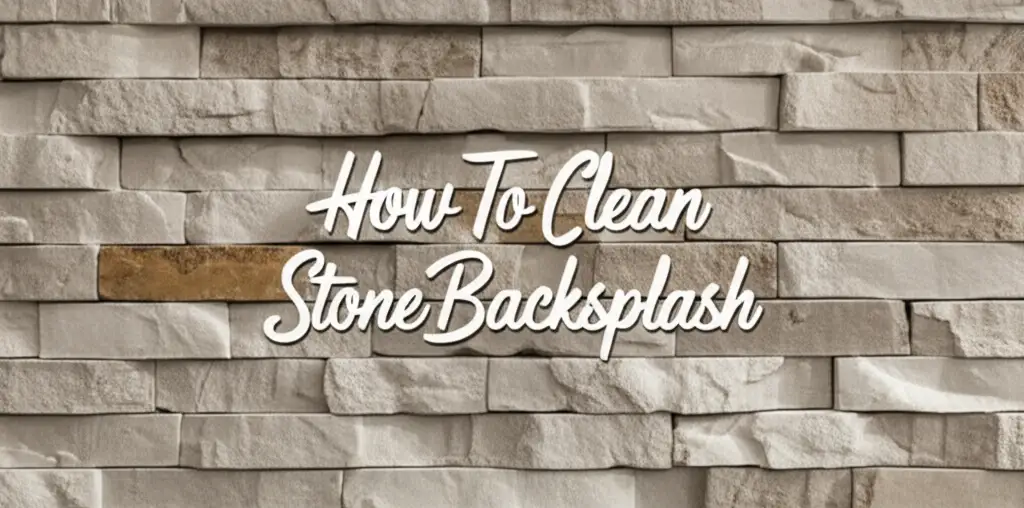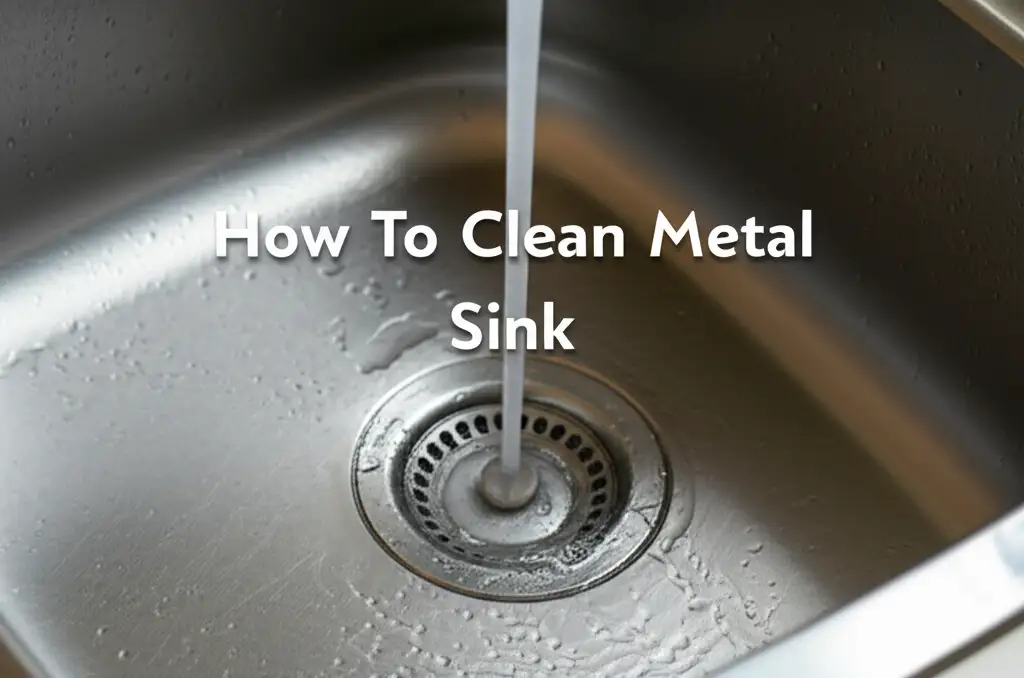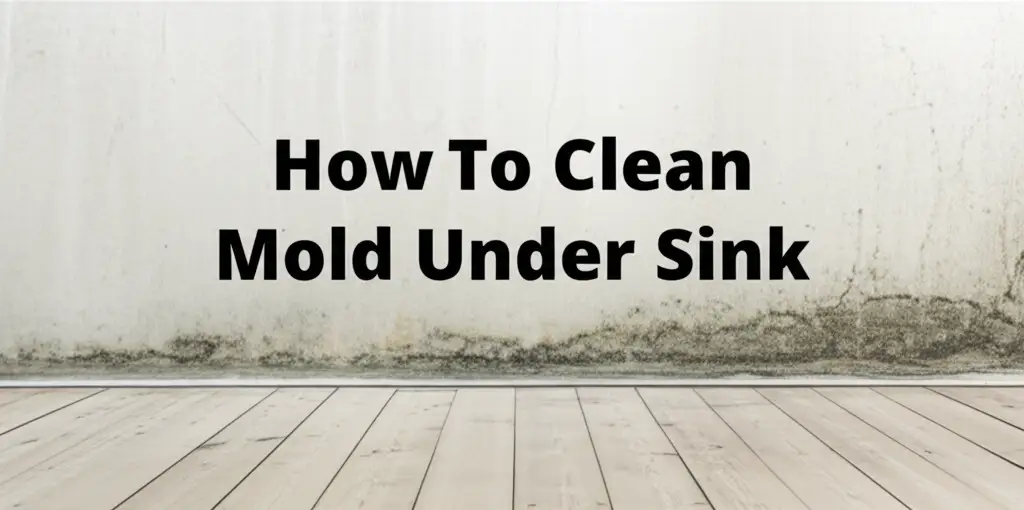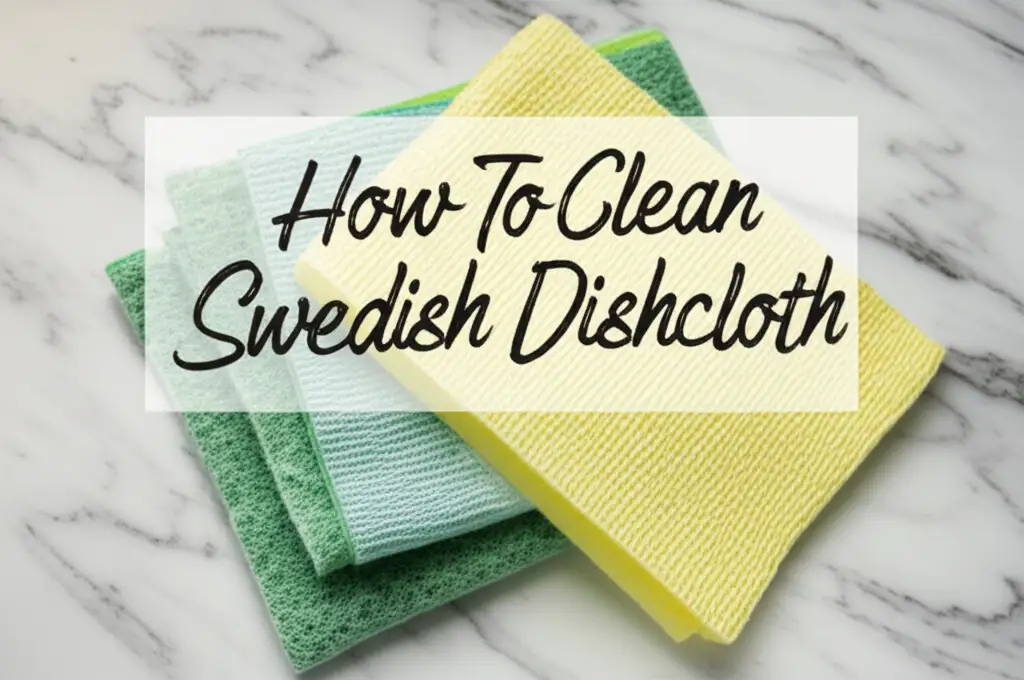· Home Cleaning · 18 min read
How To Clean Baking Stone
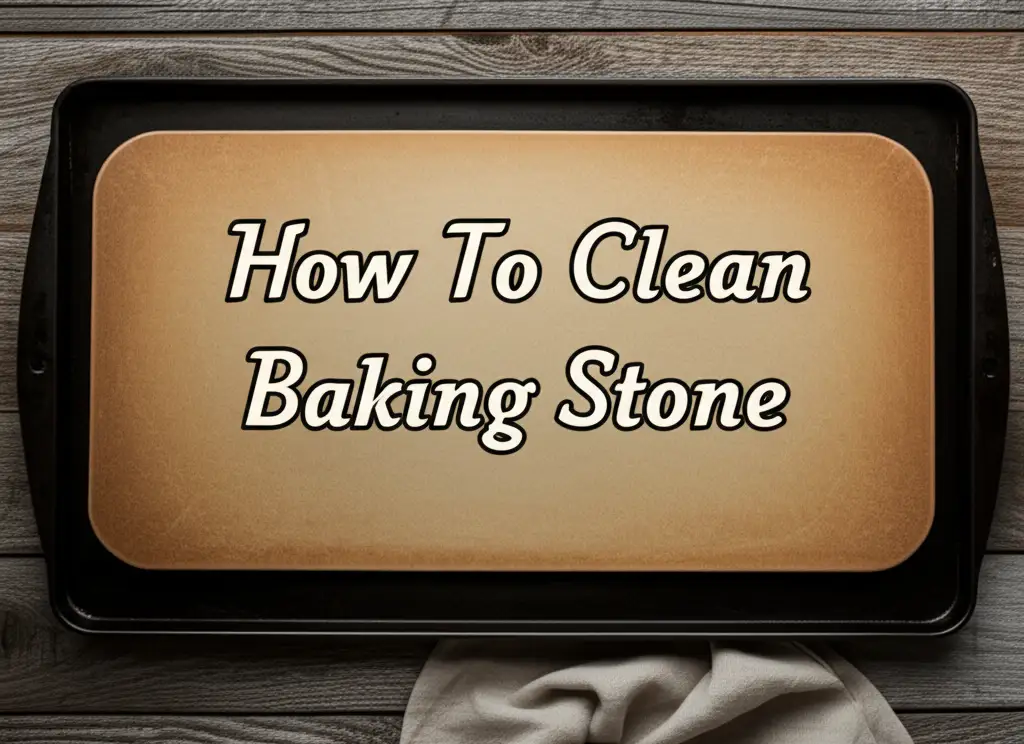
Clean Baking Stone: Restore Your Kitchen Essential
My baking stone is a treasured item in my kitchen. It helps me make perfect crispy pizzas and artisan bread. Over time, however, it gets dirty. Baked-on food and grease splatters are common. Cleaning a baking stone needs specific methods. You must avoid damage to the stone. I want to share my best tips to keep your stone in top condition. This guide covers everything from simple cleanup to deep stain removal.
Takeaway:
- Never use soap or harsh chemicals on a baking stone.
- Scrape off burnt food with a plastic or metal scraper.
- High heat in the oven can help burn off residue.
- Use baking soda paste for tough stains.
- Allow the stone to cool completely before cleaning.
To clean a baking stone, first let it cool completely. Scrape off any baked-on food with a plastic or metal scraper. For stubborn stains, create a thick paste using baking soda and a small amount of water. Apply the paste, let it sit, then scrub gently with a stiff brush and rinse with plain water.
Why a Clean Baking Stone Matters for Your Cooking
A clean baking stone performs better. It gives consistent heat distribution for your food. Food cooks evenly when the stone is clean. Bits of old food can burn and smoke. This affects the taste of your next meal. Smoke can also make your kitchen smell bad. Regular cleaning prevents odors and improves cooking results. It also extends the life of your stone. I find that my stone bakes better when I keep it clean. It is a simple step that makes a big difference.
A dirty stone loses its non-stick properties. Food starts to stick more easily. This makes it harder to remove pizza or bread. It can also lead to more burnt residue. A clean stone promotes better airflow around your food. This helps achieve that desirable crispy crust. My goal is always a perfect crust. A clean stone helps me get it every time.
Maintaining a clean surface also means better hygiene. Food particles left on the stone can harbor bacteria. Even with high baking temperatures, a clean start is best. You want your cooking surfaces to be sanitary. Cleaning your baking stone regularly ensures food safety. It gives me peace of mind when I bake. This means my family enjoys safe, tasty meals.
Some people think a baking stone should always look stained. They say the stains are part of the “seasoning.” While a stone will darken over time, this is different from caked-on food. The darkening is a natural process. Caked-on food is a problem. It can affect flavor and create smoke. Knowing the difference helps you decide when to clean. I do not aim for a spotless stone. I aim for a stone free of food debris.
Regular care also stops minor issues from becoming major problems. Small spills are easy to clean quickly. If you let them sit, they become hard, burnt-on spots. These spots take more effort to remove. A little effort often saves a lot of work later. This makes the cleaning process much simpler. It keeps your stone ready for use at any time.
Basic Daily Cleaning of Your Baking Stone
Daily cleaning for a baking stone is quite simple. You do not need many tools. The key is to act quickly after the stone cools down. I always wait until it reaches room temperature. Touching a hot stone is dangerous. A hot stone also reacts badly to cold water. This can cause it to crack. Patience is important here.
Once cool, use a plastic or nylon scraper. Many baking stones come with one. A stiff plastic spatula also works. Gently scrape off any loose food particles. Pizza cheese or bits of dough often stick. These crumbs are usually dry and easy to remove. I find this step handles most of the day-to-day mess. It keeps the surface clear for the next bake.
After scraping, wipe the stone with a dry cloth. A microfiber cloth works well. This removes any fine dust or crumbs. Some people use a damp cloth. I advise against this for most daily cleaning. The stone is porous. It absorbs water. This water needs to evaporate completely before you bake again. If not, the stone can crack when heated. A dry wipe is safer and quicker for routine cleaning.
For slight stickiness, a very lightly damp cloth might be used. Ensure it is barely wet. Then, let the stone air dry fully for several hours. Placing it in a cool oven with the door ajar can help. Air circulation is key for drying. I usually do this overnight. The stone must be bone dry before its next use. Do not rush this drying process.
Never use dish soap on your baking stone. The stone is porous. It will absorb the soap. This can leave a soapy taste in your food. It is very hard to rinse out soap from a porous surface. The soap also strips away the natural seasoning. This seasoning makes the stone non-stick. Avoid all chemical cleaners too. These products can damage the stone material. They can also leave harmful residues.
Deep Cleaning Baking Stone for Stubborn Stains
Some stains are tougher than daily cleaning handles. These are often dark, burnt-on spots. They come from cheese, sauce, or dough. For these, you need more robust methods. But remember, avoid soap. I use physical methods or natural abrasives. These preserve the stone’s integrity. It takes a little effort but gets the job done.
Using a Scraper for Stuck-On Food
For really stuck-on food, a metal scraper is effective. A metal putty knife works well. Be gentle but firm. Angle the scraper low to the stone’s surface. Push under the burnt bits. They should lift off. Be careful not to scratch the stone deeply. Small scratches are okay, they add character. Deep gouges can affect performance. This method helps remove the thickest layers of residue.
Sometimes, warming the stone slightly helps. Place the stone in a cool oven. Turn the oven to a low temperature, like 200°F (93°C). Let it warm for 15-20 minutes. This softens the baked-on grime. Then, remove the stone (use oven mitts!) and scrape it. The warmth helps the residue release more easily. This trick saves a lot of elbow grease.
After scraping, wipe away the loosened debris. Use a dry cloth or paper towels. You want to get all the flakes off. This prepares the stone for the next step. If you leave bits, they might just burn again. A thorough scrape is the first line of defense against stubborn stains. It is effective and safe for your stone.
The Power of High Heat Cleaning
High heat is a powerful cleaner for baking stones. This method is often called “self-cleaning.” Place your completely cooled stone in a cold oven. Set the oven to its highest temperature, usually 500-550°F (260-290°C). Let the oven preheat with the stone inside. Once it reaches temperature, let the stone bake for at least an hour. Even better, run your oven’s self-cleaning cycle if it has one. This intense heat turns most organic residue into ash.
After the high heat cycle, turn off the oven. Let the stone cool down completely inside the oven. This takes several hours. Do not open the oven door too soon. A sudden temperature change can crack the stone. Once cool, remove the stone. Most of the burnt-on residue will be brittle ash. Use a dry brush or a clean cloth to wipe it away. The stone will look much cleaner. It might still have dark spots. These are seasoning, not food.
This method works well for general grime buildup. It removes deep-seated oils and carbonized food. I use this method when my stone starts to look very dark and smoky. It refreshes the stone without chemicals. This process is similar to how a Blackstone griddle cleans with heat. It is a natural and effective way to deep clean. Remember, safety first with high temperatures.
Addressing Burnt Spots with a Pumice Stone
For very stubborn, localized burnt spots, a grill brick or a specific pumice stone designed for grills can work. These are mildly abrasive. They help scrub away deeply embedded carbon. Make sure the stone is cool and dry. Gently rub the pumice stone over the burnt area. Apply light pressure. The pumice will break down into a fine powder as you scrub. This powder helps lift the stain.
Do not use too much force. You do not want to gouge the stone. Just enough pressure to remove the burnt layer. You will see the stain lighten or disappear. Wipe away the pumice dust and loosened residue with a dry cloth. This method is effective for specific dark spots that scraping or high heat did not fully remove.
This method is for isolated problems. It is not for overall cleaning. Use it sparingly. It removes a tiny layer of the stone’s surface. But for those really tough spots, it is a lifesaver. I have used it on old, caked-on grease spots. It made my stone look much better. Always finish by wiping the stone clean.
Natural Cleaning Solutions: Baking Soda and Vinegar
Sometimes, a little more help is needed for greasy stains. Natural solutions like baking soda and vinegar can be useful. These agents are safe for baking stones when used correctly. They do not leave chemical residues. They also do not strip the seasoning like soap does. I often reach for these when dealing with greasy spills. They are gentle yet effective.
Baking Soda Paste for Gentle Cleaning
Baking soda is a mild abrasive and a natural deodorizer. It is excellent for grease and light stains. I make a paste using baking soda and a small amount of water. Mix about 1/2 cup of baking soda with a few tablespoons of water. You want a thick, spreadable paste. It should resemble toothpaste. This paste works on many surfaces. It even helps clean a shower with baking soda.
Apply the paste directly to the stained areas on your cool stone. Let it sit for 15-30 minutes. For very stubborn stains, leave it for several hours or overnight. The baking soda will lift the grease and grime. After soaking, scrub the area with a stiff nylon brush or an old toothbrush. Do not use metal scrubbers. Rinse the stone very lightly with plain water. Or, wipe it thoroughly with a damp cloth. Make sure all the baking soda is removed.
After wiping, let the stone air dry completely. This is crucial. Any moisture can cause problems during the next bake. I typically let it dry for a full day. You can place it in a cool, dark place. Air circulation helps. This method is safe and effective for many types of stains. It refreshes the stone without damaging it.
Vinegar’s Role in Dissolving Residue
Vinegar is another natural cleaner. It helps dissolve mineral deposits and some greases. However, vinegar is acidic. You must use it carefully on baking stones. I do not recommend pouring pure vinegar on your stone. Instead, use a very diluted solution. Or, use it for specific issues where baking soda alone does not work. Many people use vinegar and baking soda together for tough cleaning jobs.
For small, persistent greasy spots, I might dampen a cloth with white vinegar. Then, I wipe the spot directly. I follow immediately with a damp cloth rinsed in plain water. This removes the vinegar quickly. You do not want vinegar soaking into the stone. It can cause a sour smell later. It can also degrade the stone’s surface over time. So, use it sparingly and rinse well.
I generally prefer baking soda for baking stones. It is less acidic and safer for the stone’s porous nature. But vinegar has its place for very specific, non-greasy issues. For example, if you have hard water stains, a quick vinegar wipe can help. Always remember to rinse quickly and dry thoroughly. Your stone will thank you for the careful approach.
Specific Stone Types: Cleaning Pampered Chef and Ooni Stones
Different baking stones can have slight variations in material. These differences might influence how you clean them. Most general cleaning rules apply to all. However, some brands have specific recommendations. Understanding these can help you maintain your stone better. I have experience with a few popular brands. Their care is usually similar but worth noting.
Pampered Chef Stone Care
Pampered Chef stones are popular. They are often made of unglazed ceramic. These stones are known for developing a dark, seasoned appearance over time. This darkening is normal. It means the stone is seasoning. This seasoning makes the stone perform better. It is not dirt. So, your Pampered Chef stone should not look spotless white. Cleaning a Pampered Chef stone involves respecting this seasoning.
For daily cleaning, scrape off any loose food. Use their provided scraper or a plastic one. Wipe with a dry cloth. Avoid soap completely. Pampered Chef strongly advises against soap. It will absorb into the stone. This makes food taste soapy. It also ruins the seasoning. Do not submerge their stones in water. This can also cause cracking.
For stubborn stains, use the baking soda paste method. Apply the paste, let it sit, then scrub. Rinse very lightly with plain water. Or, just wipe thoroughly with a damp cloth. Then, allow the stone to air dry for a long time. Many users recommend placing it in a cool oven overnight to ensure it is completely dry. High heat cleaning (oven self-clean cycle) is also an option for Pampered Chef stones. It helps burn off residue effectively.
Ooni Pizza Stone Cleaning
Ooni pizza ovens use cordierite stones. These stones are durable. They withstand very high temperatures. Ooni stones get a lot of direct heat and often bake messy pizzas. So, they can accumulate a lot of burnt cheese and sauce. Cleaning an Ooni stone is often a bit more intense due to the high-heat cooking.
The best way to clean an Ooni stone is often through heat. After a bake, let the Ooni oven cool down slightly. The residual heat often burns off most food residue. Many users flip the stone over for the next bake. The intense heat from the burner cleans the bottom side. This is a very effective self-cleaning method. The next time you use it, the previously soiled side will be clean.
For tougher spots, once the stone is completely cool, use a stiff brush. A brass brush or a specific pizza stone brush works well. Scrape away any caked-on carbon. Avoid using water with Ooni stones too much. They are also porous. If you must use water, use a damp cloth. Wipe the stain. Then, let the stone air dry completely before its next use. Never use soap or abrasive chemical cleaners. High heat and dry scrubbing are usually enough for Ooni stones.
Mistakes to Avoid When Cleaning Baking Stones
Cleaning a baking stone seems simple. But some common mistakes can damage it. Avoiding these errors ensures your stone lasts longer. It also ensures your food tastes great. I have learned these lessons over time. I want to share them so you do not make the same errors. Protect your investment in good baking.
The biggest mistake is using soap or detergent. I cannot stress this enough. Baking stones are porous. They act like sponges. They will absorb soap. This leads to food tasting soapy. It also removes the natural seasoning. Soap residue is very hard to remove. Once absorbed, it is often permanent. Stick to plain water or dry cleaning.
Another common error is washing a hot stone. Always let your baking stone cool completely. Thermal shock causes cracking. If you take a hot stone and expose it to cold water, it will likely break. This is true for all ceramic and cordierite stones. Patience is a virtue here. Wait until the stone is at room temperature. This protects its structure.
Do not submerge your baking stone in water. Some people try to soak it clean. This fills the stone with water. If you then heat it, the water turns to steam. This steam builds pressure inside the stone. It can cause the stone to explode or crack. It also makes the stone take a very long time to dry. A fully saturated stone can take days to dry out.
Using harsh chemicals or abrasive cleaners is also a mistake. Bleach, oven cleaner, or strong degreasers can damage the stone. They can also leave harmful residues. These chemicals might also react with the stone material. Stick to natural methods. Baking soda, salt, and heat are safe choices. Your stone does not need strong chemicals.
Finally, do not worry about stains too much. A baking stone will darken and stain over time. This is natural. It is a sign of good seasoning. These dark spots usually do not affect performance. Only focus on removing actual food debris and burnt residue. A perfectly clean, spotless stone is not the goal. A functional, well-seasoned stone is what you want.
Maintaining Your Baking Stone for Longevity
Proper maintenance extends your baking stone’s life. It ensures years of great baking. Cleaning is part of maintenance. But other steps help too. Following these tips keeps your stone in top shape. I always follow these steps after cleaning. They make a big difference.
Seasoning is key for a baking stone. This is not like seasoning a cast iron pan with oil. For a baking stone, seasoning refers to the natural darkening and accumulation of baked-on oils from food. This forms a natural non-stick surface. Do not try to scrub this seasoning off. It helps food release easily. The more you use your stone, the better seasoned it becomes.
Always preheat your baking stone slowly. Place it in a cold oven. Then, turn on the oven and let it heat up to the desired temperature. Allow it to preheat for at least 30-60 minutes after the oven reaches temperature. This ensures the stone is fully heated through. Slow preheating prevents thermal shock. It also ensures even cooking. Rushing preheating can lead to cracking.
Avoid greasy spills. Place parchment paper under very oily foods. This prevents grease from soaking into the stone. While some oil contributes to seasoning, excessive grease can cause a sticky, carbonized mess. It is harder to clean later. A small sheet of parchment paper can save a lot of cleaning effort. This is especially true for items like fatty meats or very cheesy pizzas.
Store your baking stone properly. Keep it in a safe place. Avoid areas where it might be knocked or dropped. Many people store their stone inside the oven itself. This is often the safest place. It prevents accidental drops. It also keeps the stone ready for use. If you remove it, store it flat. A flat surface prevents warping or uneven pressure.
Use the right tools for food placement and removal. A pizza peel makes loading and unloading food easy. It reduces the chance of spills. Use a metal or wooden peel. Slide food directly onto the hot stone. This minimizes crumbs and accidental drips. Taking good care of your stone means thinking ahead about how you use it.
Frequently Asked Questions About Cleaning Baking Stones
Can I use soap on my baking stone?
No, never use soap on a baking stone. Baking stones are porous and will absorb the soap, leaving a soapy taste in your food. Soap also strips away the stone’s natural seasoning, which makes it non-stick. Stick to plain water or dry cleaning methods only.
How often should I clean my baking stone?
Clean your baking stone after every use for basic maintenance. This means scraping off loose food and wiping it dry. Deep cleaning, such as using baking soda paste or high heat, is only needed for stubborn stains or heavy buildup, typically every few months or as needed.
Is it normal for a baking stone to be stained and dark?
Yes, it is completely normal for a baking stone to darken and develop stains over time. This discoloration is called seasoning. It improves the stone’s performance and non-stick properties. Do not try to scrub away this natural seasoning; focus on removing actual food debris.
What if my baking stone cracks?
Baking stones can crack due to thermal shock (sudden temperature changes) or dropping. If your stone cracks, it is best to replace it. A cracked stone may not heat evenly and could break further during use, posing a safety risk. Prevent cracking by allowing the stone to cool completely before cleaning.
Can I use steel wool or abrasive scrubbers?
No, avoid using steel wool or highly abrasive scrubbers on your baking stone. These can scratch the surface deeply and damage the stone’s integrity. Stick to plastic or nylon scrapers, stiff brushes, or gentle abrasives like baking soda paste for cleaning.
How do I remove burnt cheese from my pizza stone?
For burnt cheese, let the stone cool completely. Use a metal or plastic scraper to carefully scrape off the hardened cheese. If it’s very stubborn, apply a thick baking soda paste, let it sit for a few hours, then scrub with a stiff brush and wipe clean.
Conclusion
Keeping your baking stone clean is not difficult. It just needs the right approach. Remember, no soap, no harsh chemicals, and always let it cool down. Scraping, high heat, and baking soda are your best tools. I use these methods all the time. They keep my stone working perfectly. A well-maintained stone gives you amazing results every time you bake.
By following these steps, your baking stone will last many years. It will keep delivering those crispy crusts and perfectly baked goods. A little care goes a long way. So, next time you finish baking, remember to properly clean your baking stone. Enjoy the delicious outcomes of your clean stone!
- baking stone cleaning
- pizza stone care
- kitchen cleaning
- oven accessories
- natural stone cleaning

